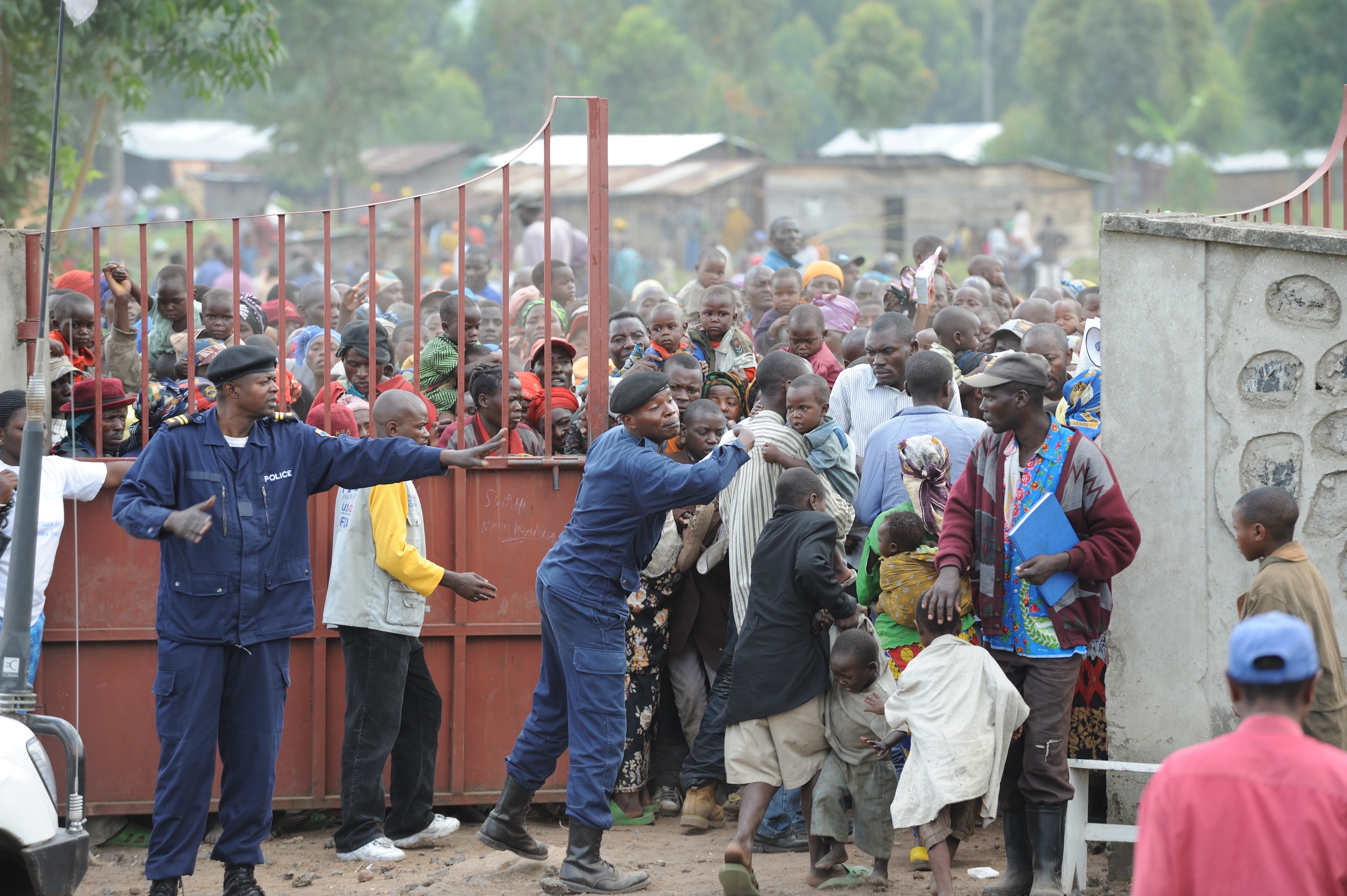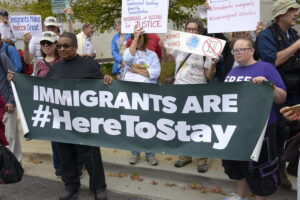
A scene from the aftermath of a deadly earthquake that rocked Haiti in 2010, displacing thousands of people.
By Tyler Brady
WASHINGTON –The Trump administration announced Nov. 20 that it is ending a program that for the past seven years has allowed thousands of Haitians to live and work in the United States following a natural disaster in their country.
When and Why Did the Haitians Come to the U.S.? In 2010, an earthquake devastated parts of Haiti. The earthquake killed over 230,000 people and injured another 300,000. It displaced 1.5 million people. It also caused about $8 billion in damage, damaging the main airport, most ports and 60 percent of the capital city’s government buildings. The earthquake destroyed about 80 percent of rural housing, leading about 58,700 Haitians to come to the United States for refuge.
When and Why Are They Being Required to Leave? Acting Secretary of Homeland Security Elaine Duke has extended Haitian Temporary Protected status to July 22, 2019, after which, formerly protected Haitians will have to leave the United States. The Department of Homeland Security reports that displaced Haitians should be ready to return to their home country now that “significant steps have been taken to improve the stability and quality of life for Haitian citizens, and Haiti is able to safely receive traditional levels of returned citizens.” Officials deem current conditions in Haiti suitable for residence and therefore sufficient for refugees to return.
What Was the Law that Allowed Them to Come? The Temporary Protected Status program was signed into law by President George H.W. Bush and Congress in 1990. Temporary Protected Status is granted by the secretary of the U.S. Department of Homeland Security to eligible foreign-born individuals who are unable to return home safely due to conditions or circumstances preventing their country from adequately handling the return. The law allows protected individuals to live and work in the United States as if they were legal citizens during the span of its effectiveness.
Have people from other countries come to the U.S. under this law? More than 300,000 people from countries including El Salvador, Honduras, Nicaragua and South Sudan are currently in the U.S. under the Temporary Protected Status program. The Trump administration earlier this month ended the Temporary Protected Status for Nicaraguans.
What Happens If the Haitians Don’t Leave? If Haitians do not leave after their protected status expires, they will immediately be classified as illegal immigrants and, if caught, could face deportation from the United States. They can also apply to immigrate to the U.S. through other channels.
Is Congress Considering Action to Halt the Deportation? Currently there is no consideration being made to extend protected status beyond July 2019. Some legislators oppose the ending of the Haitians’ status. For example, Sen. Bill Nelson, a Florida Democrat, tweeted: “There is no reason to send 60,000 Haitians back to a country that cannot provide for them.” He said he is “strongly urging the administration to reconsider.” Meanwhile, Florida Republican Sen. Marco Rubio stated in an op-ed in the Miami Herald that “if TPS is not extended, Haitians sent home will face dire conditions, including lack of housing, inadequate health services and low prospects for employment.”
Has the Haitian Government Said Anything about the Decision? The Haitian government has not issued a statement. Haitian Ambassador Paul Altidor and Foreign Affairs Minister Antonio Rodrigue met with Elaine Duke on Nov. 13 to propose an extension to Haitian Temporary Protected Status, which she consequently granted. Haitian Temporary Protected Status was initially set to end Jan. 22, 2018.
Have Haitian Organizations in the United States Made any Comments? Busloads of demonstrators, including many from Broward and Miami-Dade counties in Florida, traveled to West Palm Beach Nov. 21 to protest the decision, according to the Florida Sun Sentinel newspaper. Many of the Haitians who came to the U.S. under Temporary Protected Status settled in South Florida, where there was already a Haitian community. More than 200 people, which included the service labor union Unite Here, marched through downtown West Palm Beach and across the bridge over the Intracoastal Waterway toward President Trump’s Mar-a-Lago resort hotel before they were stopped by police. They carried signs with various messages, including “Immigrants make South Florida work,” “Honk for TPS” and “Injustice Anywhere is a Threat to Justice Everywhere.” Trump arrived after the demonstration was over to spend the Thanksgiving holiday at Mar-a-Lago.

